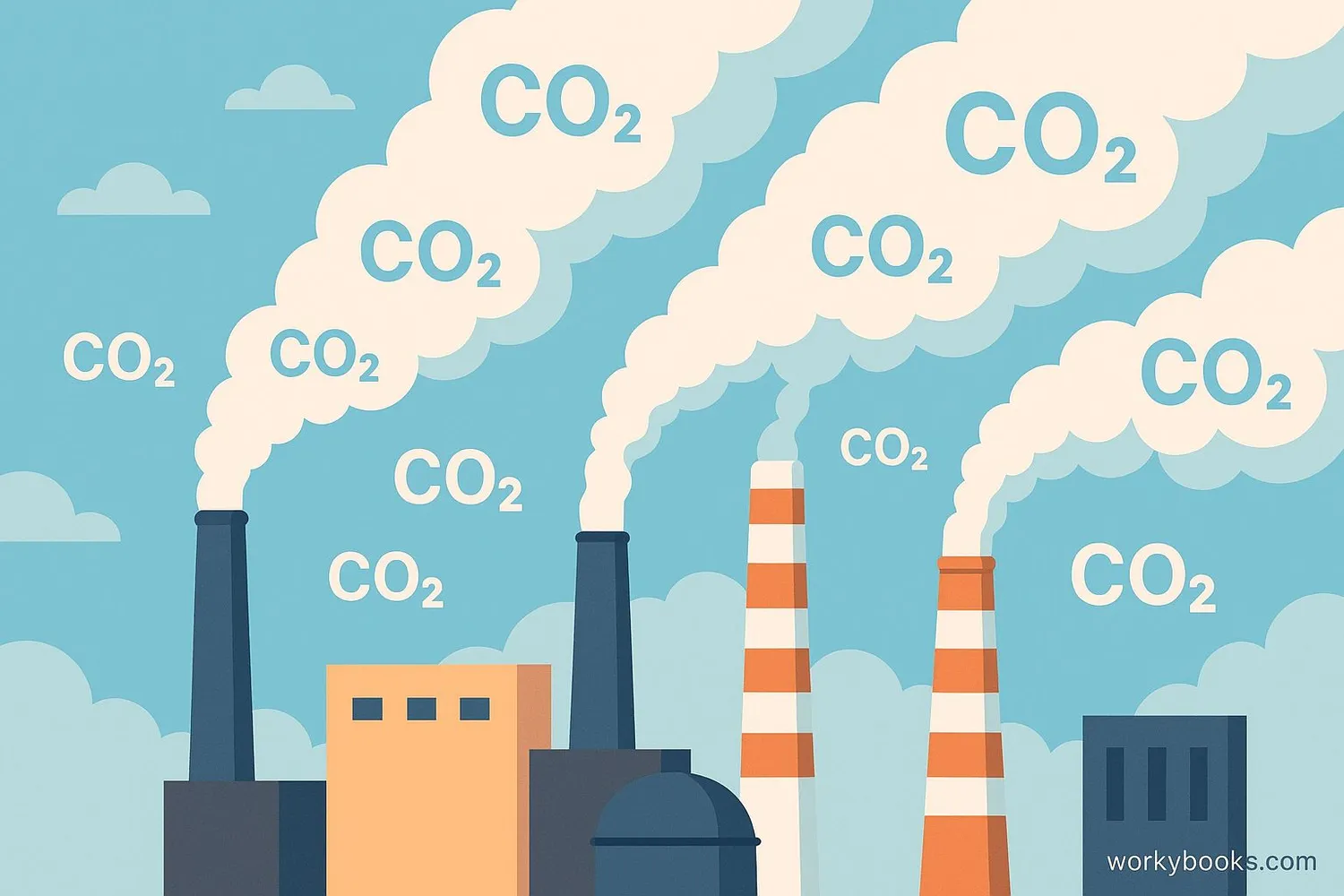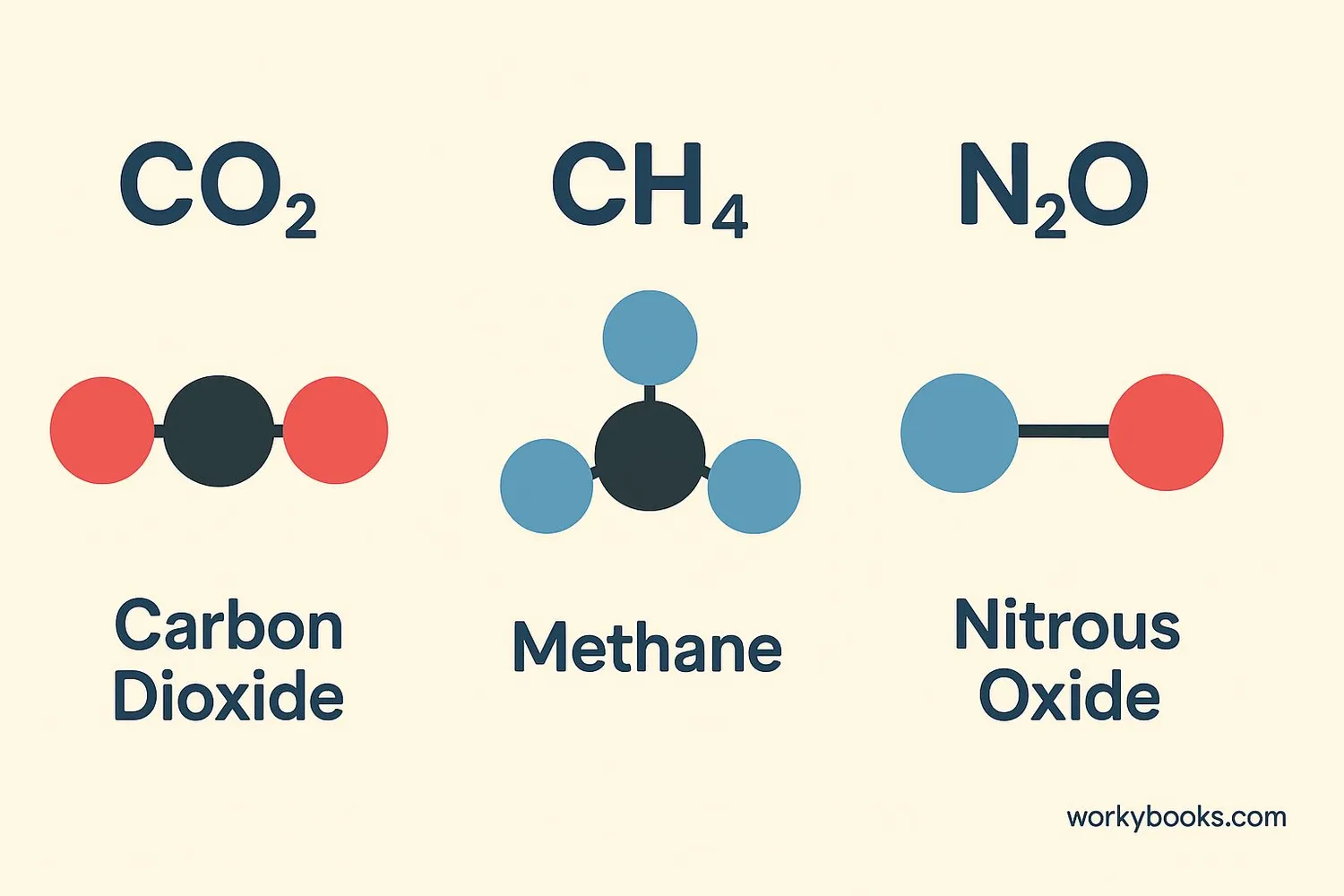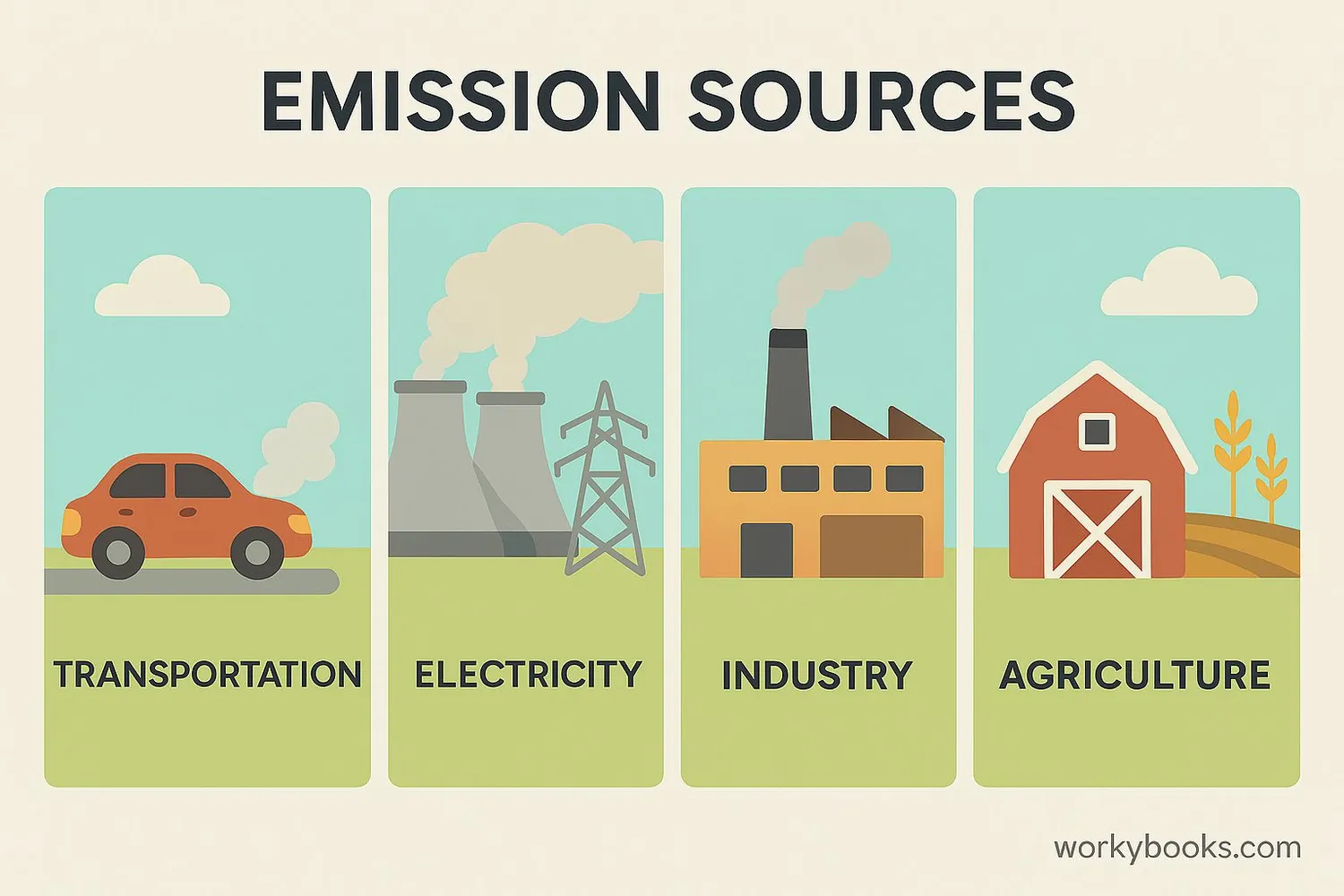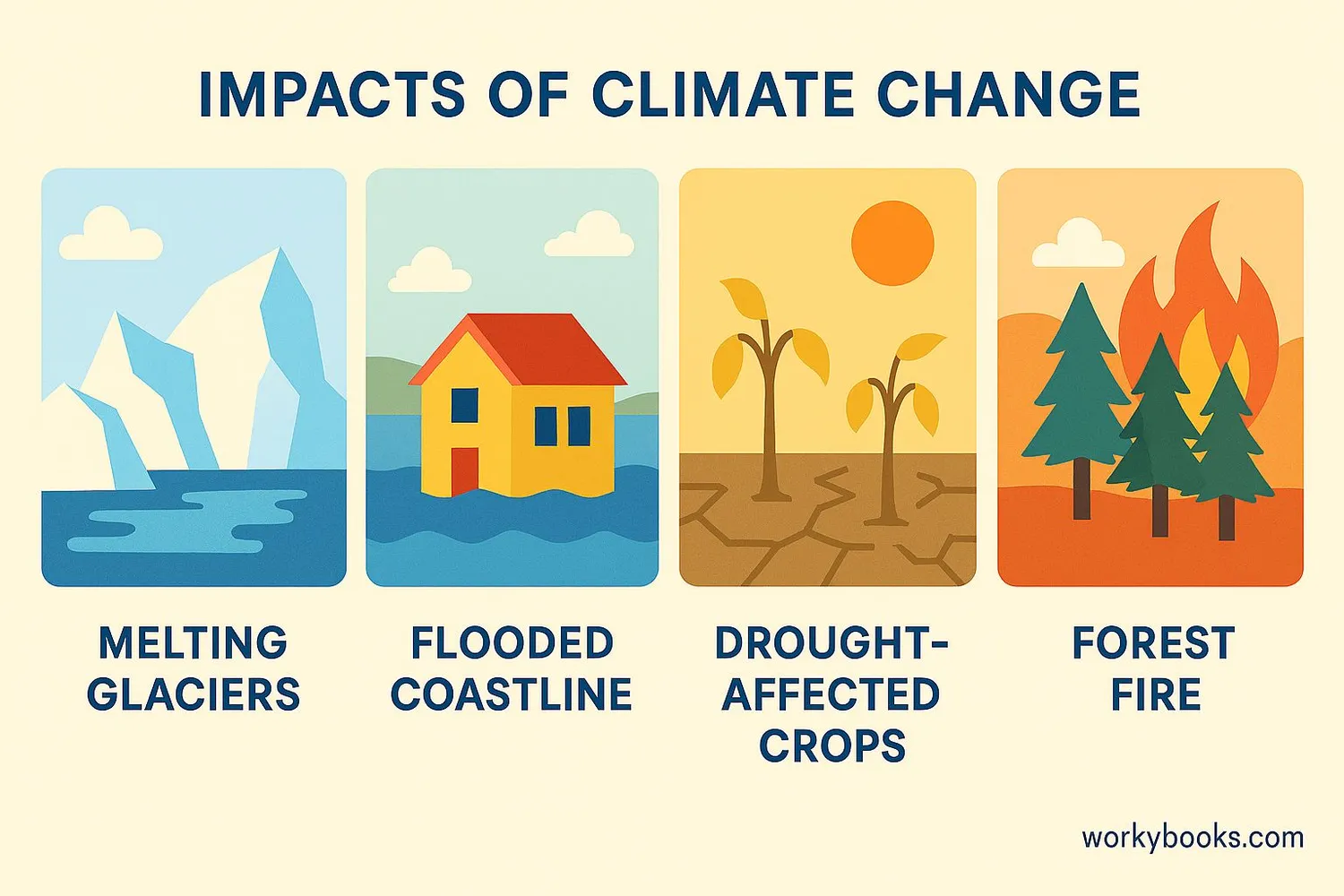Emissions - Definition, Examples, Quiz, FAQ, Trivia
Discover how gases released into our atmosphere affect our planet
What Are Emissions?

Emissions are gases and particles that are released into the air. When we burn fossil fuels like coal, oil, and natural gas, we create emissions. The most important emission to understand is carbon dioxide (CO₂), which is released when we use energy to power our homes, cars, and factories.
Think of emissions like invisible exhaust from cars and factories. Just like a car releases exhaust from its tailpipe, factories and power plants release emissions from their smokestacks. These emissions mix with the air we breathe and can stay in our atmosphere for many years.
Did You Know?
Before the Industrial Revolution, CO₂ levels were about 280 parts per million. Today, they're over 420 parts per million - the highest in 800,000 years!
Types of Emissions

Not all emissions are the same! There are different types of greenhouse gases that contribute to climate change:
Carbon Dioxide (CO₂)
Comes from burning fossil fuels, deforestation, and industrial processes
Methane (CH₄)
Released from livestock, landfills, and natural gas systems
Nitrous Oxide (N₂O)
Comes from agricultural fertilizers and industrial processes
Fluorinated Gases
Industrial gases used in refrigeration and manufacturing
Each gas has a different impact on our atmosphere. Methane is especially powerful - one ton of methane causes as much warming as 28-36 tons of CO₂! But since we release so much more CO₂, it remains the most important gas to reduce.
Global Warming Potential
Scientists measure how powerful different emissions are using "Global Warming Potential" (GWP). CO₂ has a GWP of 1, while methane has a GWP of 28-36 over 100 years!
Where Emissions Come From

Emissions come from many different human activities. Here are the main sources:
Electricity Production
Burning coal and natural gas to make electricity creates 25% of emissions
Transportation
Cars, trucks, ships and planes create 28% of emissions
Industry
Factories and manufacturing create 23% of emissions
Other important sources include agriculture (growing food), commercial and residential buildings (heating and cooling), and land use changes like deforestation. Every time we flip a light switch, drive a car, or buy something new, we're contributing to emissions.
Your carbon footprint is the total amount of greenhouse gases that are generated by your actions. Everything from the food you eat to the clothes you wear has a carbon footprint!
Impact on Our Planet

Emissions are changing our planet in significant ways. When greenhouse gases build up in the atmosphere, they trap heat from the sun, causing global temperatures to rise. This is called the greenhouse effect.
The impacts of emissions include:
• Rising global temperatures
• Melting glaciers and ice caps
• Rising sea levels
• More extreme weather events
• Changes to ecosystems and wildlife habitats
This process is known as climate change. It affects every country on every continent, disrupting national economies and affecting lives.
Air Pollution Connection
Many emissions that cause climate change also create air pollution that affects our health. Reducing emissions helps both the planet and human health!
Emissions Quiz
Test your knowledge about emissions with this interactive quiz! Choose the best answer for each question.
Frequently Asked Questions
Here are answers to some common questions about emissions:
Emissions Trivia
Discover some amazing facts about emissions and our atmosphere!
Transportation Impact
Transportation creates more greenhouse gas emissions than any other sector in the United States, accounting for about 28% of total emissions.
CO2 Concentration
Atmospheric CO2 levels are now higher than at any point in the last 800,000 years, and possibly higher than in the last 3 million years!
Food Emissions
Producing one pound of beef creates about 15 times more emissions than producing one pound of plant-based foods like lentils or beans.
Digital Pollution
Sending an email produces about 4 grams of CO2 emissions. With over 300 billion emails sent daily, that adds up to more than 1.2 million metric tons of CO2 each day!





